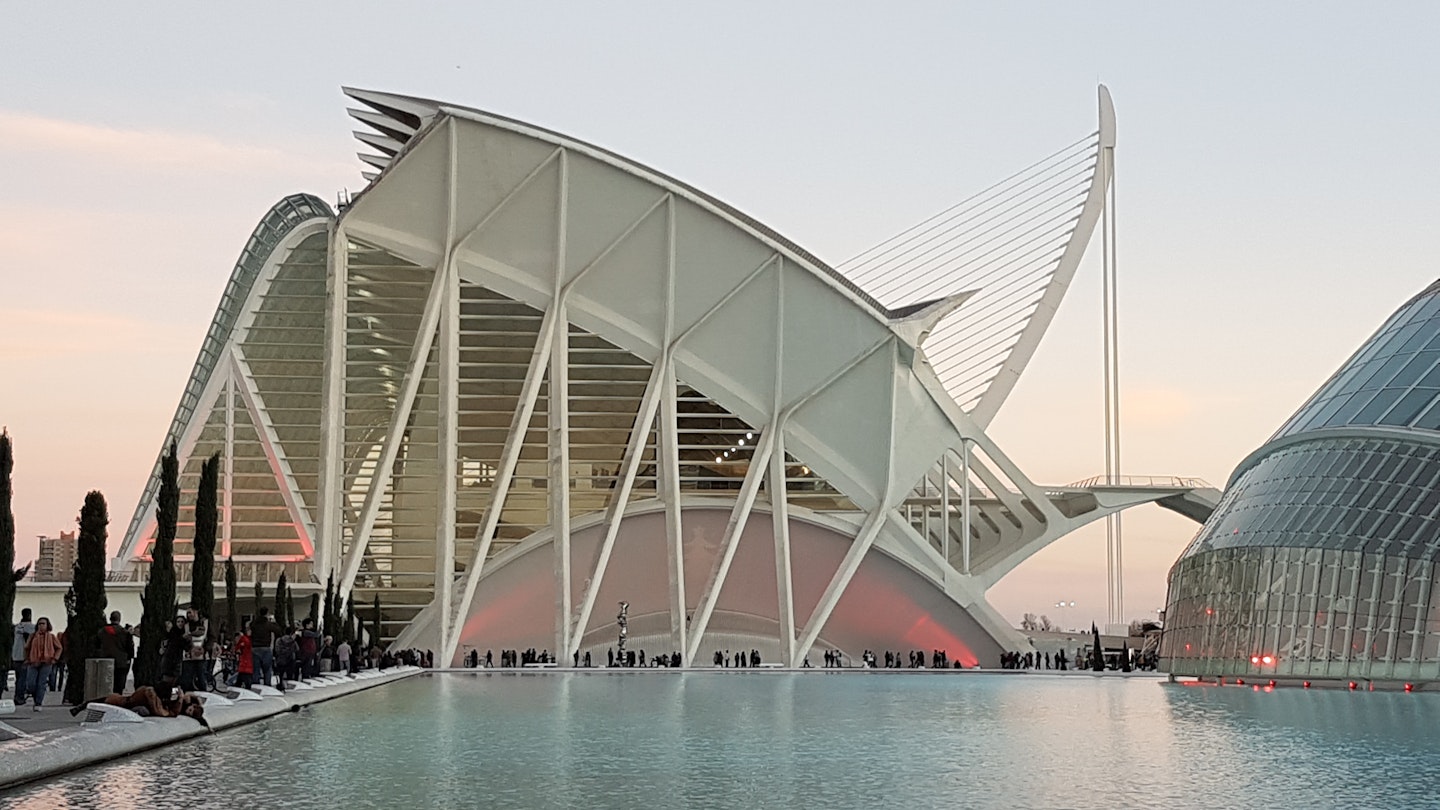One of the joys of Valencia is that it flies a little under the radar compared to Barcelona, Madrid, or Seville. Hence, the city’s museums are not its big-ticket sights. However, as you start exploring around town, you will realize there is a high-quality, intriguing, and varied selection of excellent art and museums devoted to particular aspects of local history and culture. These establishments are the best way to truly understand the city and put your experiences in context.
A tour of Valencia’s museums is also a dive into the city’s architecture, featuring exhibitions that span from noble Renaissance palaces to Civil War refuges, as well as the futuristic visions of renowned architect and Valencia native, Santiago Calatrava.
IVAM
Best for contemporary art
On the northwestern edge of the old town, IVAM serves as Valencia’s principal modern art gallery. The Institut Valencià d’Art Modern, its full name, is a striking space that features excellent temporary exhibitions. Moreover, it is also worth visiting for its permanent collection of the work of Catalan sculptor Julio González (1876-1942). Housing his work was a primary consideration in the creation of this gallery. Here, the sculptures are exquisitely lit and displayed, showcasing classical nudes and busts in various materials that impress, particularly the sensitive iron Masques that take your breath away and set the scene for better-known artists later in the 20th century. The café here is also a popular place to relax on the edge of the Barrio del Carmen.

L’Almoina
Best for delving into ruins
Like many Mediterranean cities, the archaeological history of Valencia is complex. Close to Valencia’s cathedral, you can gain a fascinating glimpse of that complexity at L’Almoina, where in an atmospheric basement space, you can stroll around various ancient foundations. Excavations have revealed rich layers, including a Roman bathhouse, forum buildings, a factory, the remains of the later Moorish fortress, a royal cemetery, and a Renaissance hospital for the poor.
Museo de Bellas Artes
Best classical gallery
Although it feels a little understated, Valencia’s Museo de Bellas Artes, housed in a former seminary, ranks among Spain’s best traditional art galleries. Bright and spacious, it houses works by significant Spanish masters, including splendid Goya portraits, a haunting Velázquez, and works by El Greco, Murillo, and local painters. Notably, a dedicated wing is devoted to Joaquín Sorolla, a versatile Valencian artist (1863-1923), whose sensitive portraiture poignantly captures the spirit of his era in Spain. Be sure not to miss María convaleciente, a breathtaking depiction of his sick daughter.

Museo Nacional de Cerámica
Best architectural extravaganza
The exuberance of the façade of this flamboyant palace—curling and swirling as if in motion—is reason enough to entice visitors inside. The rococo extravagance continues in the gloriously over-the-top interiors, which house a museum dedicated to the traditionally important local ceramics industry. It’s a compelling mix of granular information and handsome displays, presenting both historic and modern works cleverly juxtaposed.
Museo de la Seda
Most elegant
The elegance of this 15th-century palace in a slightly off-the-beaten-path corner of Valencia’s old town makes it an ideal setting for a museum of silk. This was a significant Valencian industry and this building once served as its guildhall. The displays take you through the process from munching caterpillars to swishing velvet-sleeved courtiers. Interestingly, the amount of information is just right and easily digestible. Furthermore, the interiors boast beauty, particularly the stunning rococo tiled floor depicting the global reach of the silk trade.

Museo Fallero
Best for local culture
For those unable to attend Las Fallas, Valencia’s premier festival, you can still experience its essence at the Museo Fallero. Each year, neighborhood groups create hundreds of fallas, which are giant burlesque statues crafted from papier-mâché and polystyrene, complete with capering figurines (ninots). The scenes often reference topical events in politics or popular culture. All are ultimately destined to be burned in massive bonfires, save for one figurine that is spared by popular vote. The fortunate ninot finds its place in history at the museum. Consequently, it’s fascinating to observe their evolution over the years while appreciating the comical, grotesque, and at times, moving likenesses up close.
Museo L’Iber
Most unusual
Located in the heart of historic Valencia on Calle de Caballeros, one can find one of the city’s quirkier museums—L’Iber, dedicated to toy soldiers. Its impressive collection boasts over a million tiny combatants, alongside astonishingly detailed dioramas and set pieces of historic battles spanning from Ancient Greece to modern times, including themes from science fiction.
Museo de las Ciencias Príncipe Felipe
Best for children
The spine of Santiago Calatrava’s majestic ensemble at the City of Arts and Sciences is this brilliant science museum, housed within a structure resembling a giant whale skeleton with protruding ribs and a knobbly spine. Inside, it delivers an interactive experience that successfully blends learning with fun. Therefore, it’s suitable for all ages and covers topics from the solar system to the inner workings of the brain, along with substantial content on sustainability.





